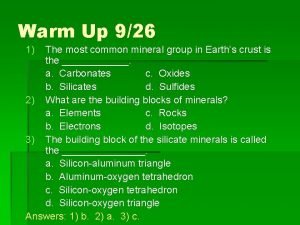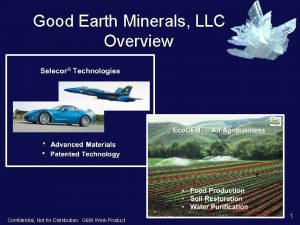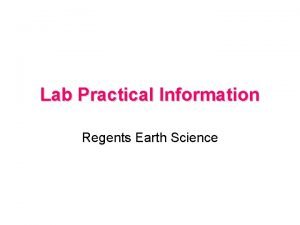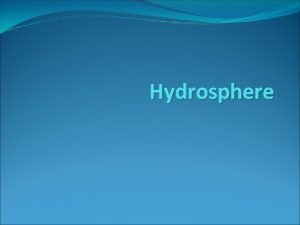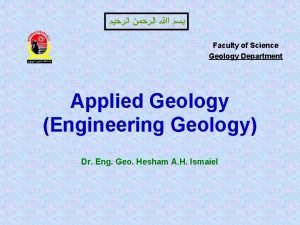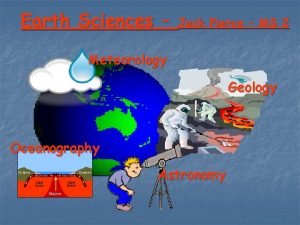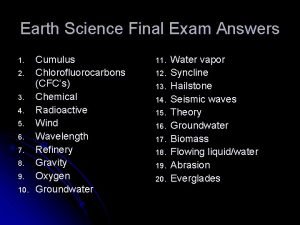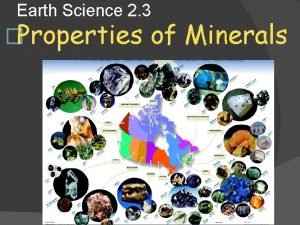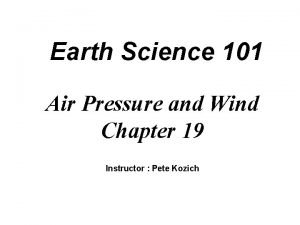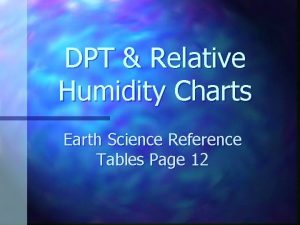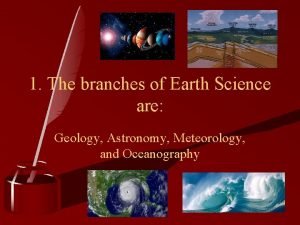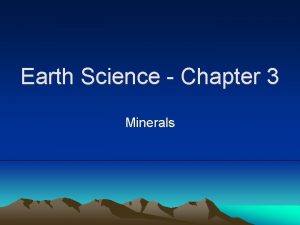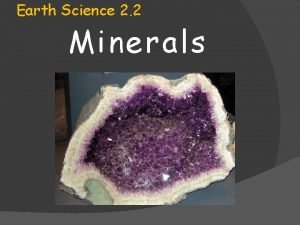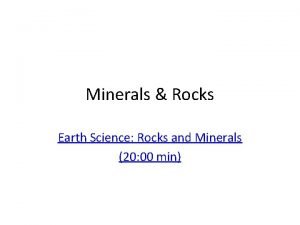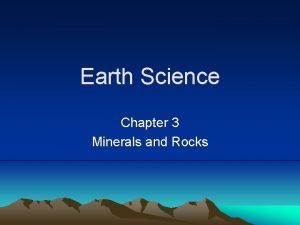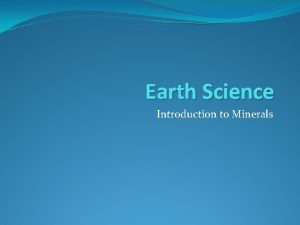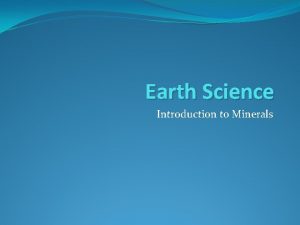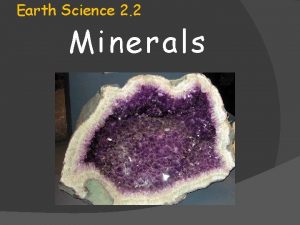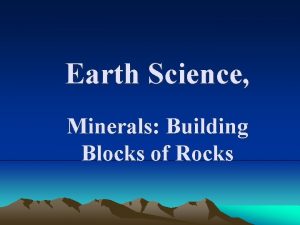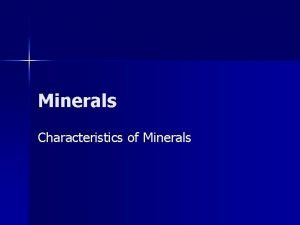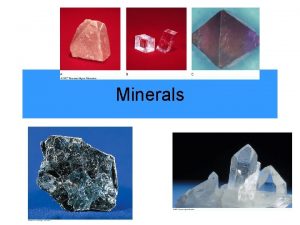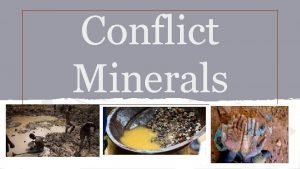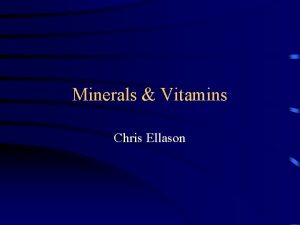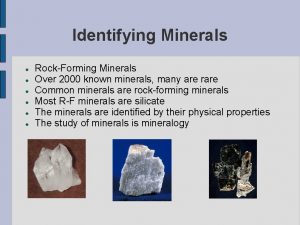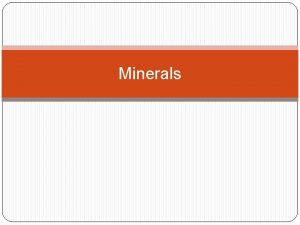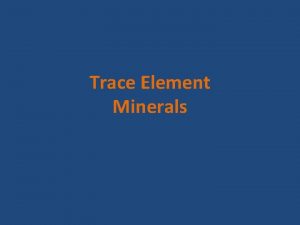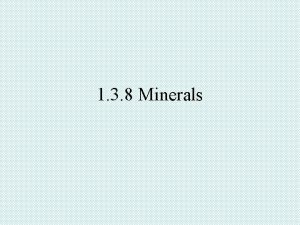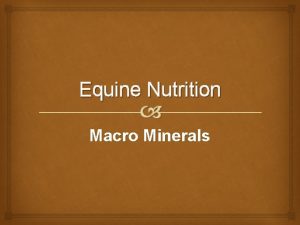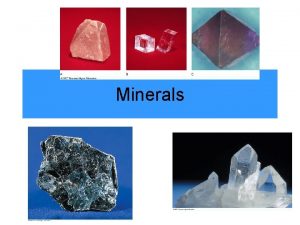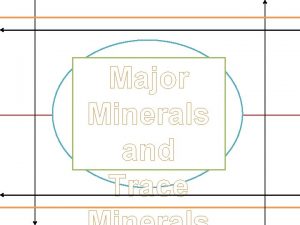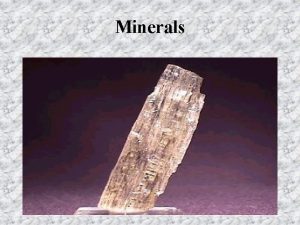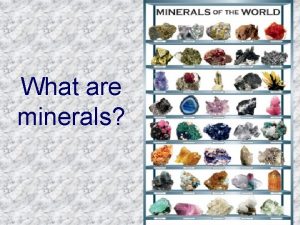Ch 3 Minerals Earth Science Section 1 Minerals



























- Slides: 27

Ch. 3 Minerals Earth Science

Section 1 – Minerals � Learning Objectives • Describe characteristics that all minerals share • Explain how minerals form

Section 1 – Minerals � A. Mineral – four characteristics • 1. Naturally occurring – formed by processes on or inside Earth with no input from humans • 2. Inorganic – not made by life processes

Minerals continued… • 3. Element or compound with a definite chemical composition • 4. Orderly arrangement of atoms; all minerals are crystalline solids.

� B. Crystal – solid with atoms arranged in orderly, repeating patterns • 1. Some crystals form from magma, hot melted rock below the Earth’s surface. �a. When magma cools slowly, crystals are large. �b. When magma cools quickly, crystals are small.

• 2. Crystals can form from solutions as water evaporates or if too much of a substance is dissolved in water.

� C. Mineral groups are defined by their composition. • 1. Silicates contain silicon, oxygen, and one or more other elements; they include most common rock-forming minerals. • 2. Silicon and oxygen are the two most abundant elements in Earth’s crust; they form the building blocks of many minerals.

Discussion Question � What processes can cause crystals to form?

Discussion Question � What processes can cause crystals to form? • Crystals form from: • cooling magma • evaporating solutions • solutions in which too much of a substance is dissolved

Section 2 – Mineral Identification � Learning Objectives • Describe physical properties used to identify minerals. • Identify minerals using physical properties such as hardness and streak.

Section 2 – Mineral Identification � A. Color and appearance are not enough to distinguish most minerals. � B. Hardness is a measure of how easily a mineral can be scratched; the Mohs scale compares mineral hardness


� C. The way a mineral reflects light is its luster. • 1. Can be metallic or nonmetallic • 2. Nonmetallic lusters include dull, pearly, silky, and glassy.

� D. Specific gravity is the ratio of a mineral’s weight to the weight of an equal volume of water; expressed as a number.

� E. Streak is the color of a mineral in powdered form, but the streak test is useful only for minerals softer than the streak plate.

� F. The way a mineral breaks can be a distinguishing characteristic. • 1. Minerals with cleavage break along smooth, flat surfaces. • 2. Minerals with fracture break with uneven, rough, or jagged surfaces.

� G. Some minerals have unique properties that involve light or magnetism.

Discussion Question � What are five properties that could be examined to identify a mineral?

Discussion Question � What are five properties that could be examined to identify a mineral? • • • Hardness Luster Specific gravity Streak Cleavage Fracture

Section 3 – Uses of Minerals � Learning Objectives • Describe characteristics of gems that make them more valuable than other minerals. • Identify useful elements that are contained in minerals.

Section 3 – Uses of Minerals � A. Gems – rare and beautiful minerals that are highly prized • 1. The Cullinan diamond and the Hope diamond are famous historical gems.

• 2. Gems have industrial applications in abrasives, lasers, and electronics. http: //www. livescience. com/32509 -why-is -quartz-used-in-watches. html

� B. Minerals can contain other useful elements. • 1. An ore is a mineral or rock containing a substance that can be mined at a profit. • 2. Elements must be refined, or purified, from ores. Fe (Iron)

• 3. Some elements dissolve in fluids, travel through weaknesses in rocks, and in those weaknesses form mineral deposits called vein mineral deposits. • 4. Titanium is a useful element derived from the minerals ilmenite and rutile.


Discussion Question � What are three industrial applications for gems?

Discussion Question � What are three industrial applications for gems? • Abrasives • Lasers • Electronics
 Most abundant minerals in earth's crust
Most abundant minerals in earth's crust Good earth minerals
Good earth minerals What is your favourite subject?
What is your favourite subject? Meteorological symbols for four types of fronts
Meteorological symbols for four types of fronts Earth science sol 2010
Earth science sol 2010 Regents earth science lab practical
Regents earth science lab practical Part d earth science regents
Part d earth science regents Earth science lab practical
Earth science lab practical Earth science grade 9
Earth science grade 9 Dynamic equilibrium earth science
Dynamic equilibrium earth science Hydrosphere
Hydrosphere Earth science jeopardy 8th grade
Earth science jeopardy 8th grade Geology earth science definition
Geology earth science definition Pa state tree
Pa state tree Earth science meaning
Earth science meaning Geology earth science definition
Geology earth science definition Earth science sol review
Earth science sol review Zone of aeration
Zone of aeration Earth science final exam
Earth science final exam Earth science lab practical
Earth science lab practical Earth science semester 2 final exam answers
Earth science semester 2 final exam answers Cleavage science definition
Cleavage science definition Air pressure definition earth science
Air pressure definition earth science Earth science reference table relative humidity
Earth science reference table relative humidity 4 major branches of science
4 major branches of science 282 ways to pass the earth science regents
282 ways to pass the earth science regents Earth science vs geology
Earth science vs geology Honors earth science
Honors earth science
